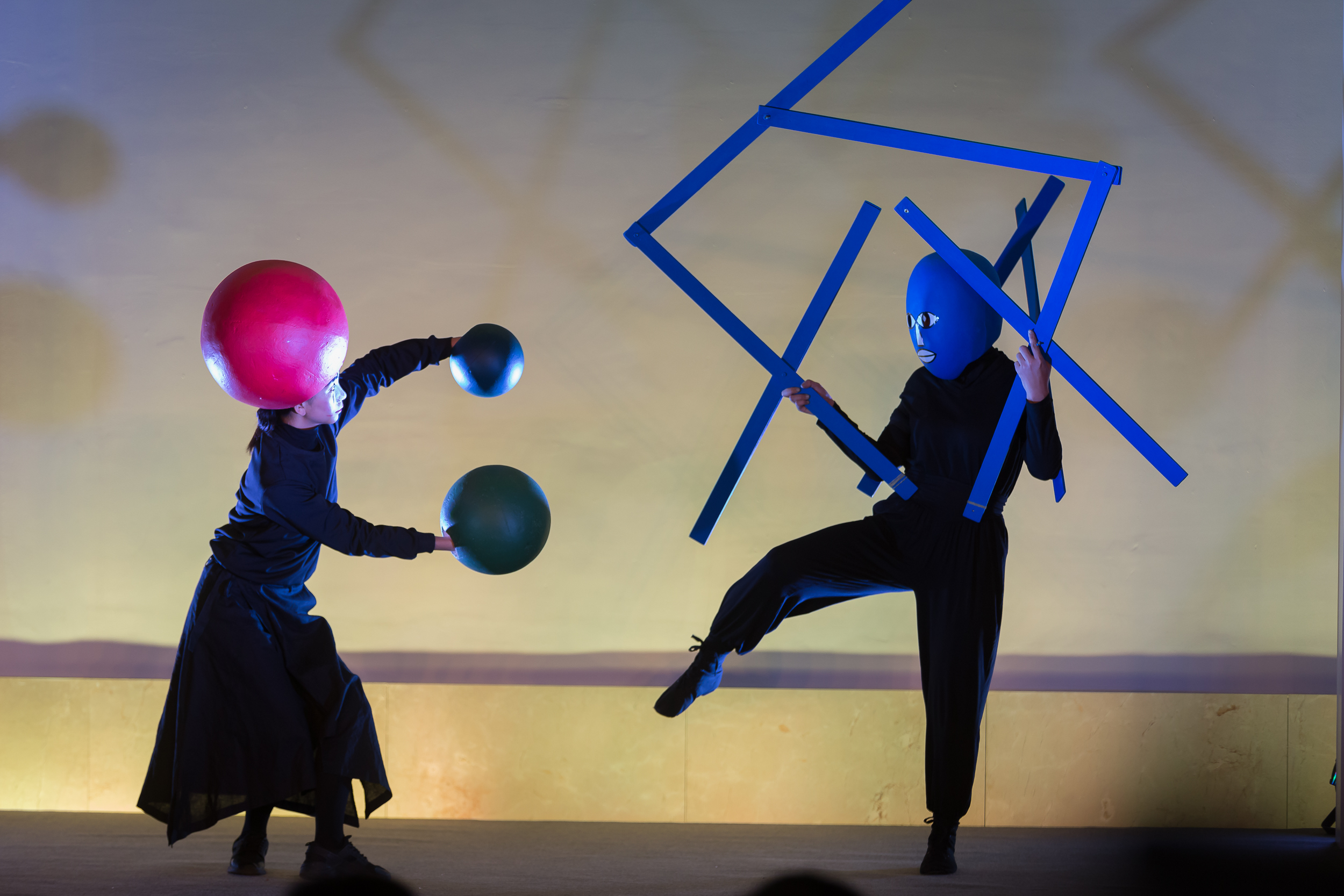Xiang Peng – Figural Space Cabinet als performative Architektonik
Torsten Blume
Xiang Peng – Figural Space Cabinet as performative architectonics, performing design and physical exercise for designers
Like hardly any other school, the Bauhaus claimed the possibility of educating the “whole person” and ultimately even the whole society through newly designed forms, images and things of daily life. But before and alongside the design of tubular steel furniture suitable for industrial mass production, strictly geometrically composed luminaires and houses to be produced in series, the essential achievement and task of this school was to educate the designers as broadly and holistically as possible, both sensually and concretely and at the same time constantly reflected upon. This included the preliminary course as comprehensive perception training and, from 1921, the stage workshop, which Oskar Schlemmer headed from 1923 to 1929. The Bauhaus Stage was ultimately a unique extension of the educational offerings for the designers and architects studying at the Bauhaus. Schlemmer developed the Bauhaus Stage as a pedagogical programme of applied, performing interior design. Here the students were not to become theatre-makers, actors or dancers, but rather to be able to expand their sensitivity in dealing with material and space with dance movement exercises – in dancing for room designers. In the 1920s, Oskar Schlemmer discovered traditional Chinese opera as an important role model while searching for the “regularity of the theatrical play” and “dance mathematics” for the Bauhaus stage. He was fascinated by the strict artificial formalism of historical Chinese music theatre – which does not deny its origins in colourful folk and dance-artistic singing plays – and how defined characters are represented by costume types. For Schlemmer, form-conscious movements and defined movement characters also formed the basis of his idea of a “type stage”. In the performance project “Xiang Peng – Figural Space Cabinet”, Torsten Blume from the Bauhaus Dessau Foundation and Hu Zhenhang from the China Academy of Art Hangzhou with students from various artistic and design disciplines have reflected anew on this historical pedagogical perspective and Chinese-German interaction. Thus, an experimental dialogue developed in which the abstraction of the Bauhaus stage and the formalism of traditional Chinese theatre meet again and can be explored anew.
Further festival lectures | Free admission
Mi 11.09.
Adolphe Appia – Schöpfer der “rhythmischen Räume”
So 15.09.
Die Hellerauer Weltkulturerbe-Bewerbung – Ereignisse und Perspektiven
Mi 18.09.
HELLERAU – Ursprung des Bauhauses
Sa 21.09.
Behind the scenes: Über die Peformance “gegeneinanderüber”
Ursula Sax und Semjon H.N. Semjon


